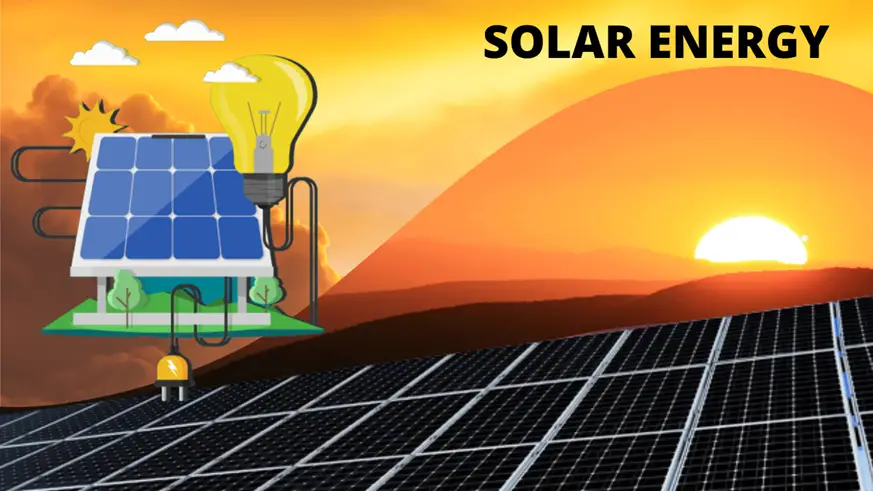These days “tiny homes” are having a serious moment. Residents of an overly complicated world are drawn to the simplicity and style of these minimal dwellings, many of which are available out-of-the-box or via prefab kits that recall the days when you could order your whole homestead out of a catalog.
Many such startups across the world have emerged to build prefabs or construct 3D-printed tiny homes in a nutshell.
So let us understand what prefab is and how they are 3D printed with environmentally friendly methods like recycling plastic.
What are Prefabs?
Prefabrication is the process of manufacturing and constructing prefabricated buildings, sometimes known as prefabs. It is constructed of factory-produced parts or components that are transported and put together on-site to create the entire building.
Since sustainability has been running on everybody’s mind, everyone is aspiring toward’s eco-friendly and mindful ways of living.
The world of architecture has been entirely overrun by tiny dwellings, which have solidified their status as environmentally friendly, sparse, and cost-effective micro-living arrangements. What was once just a cute little fad is now becoming a viable alternative for interior design.
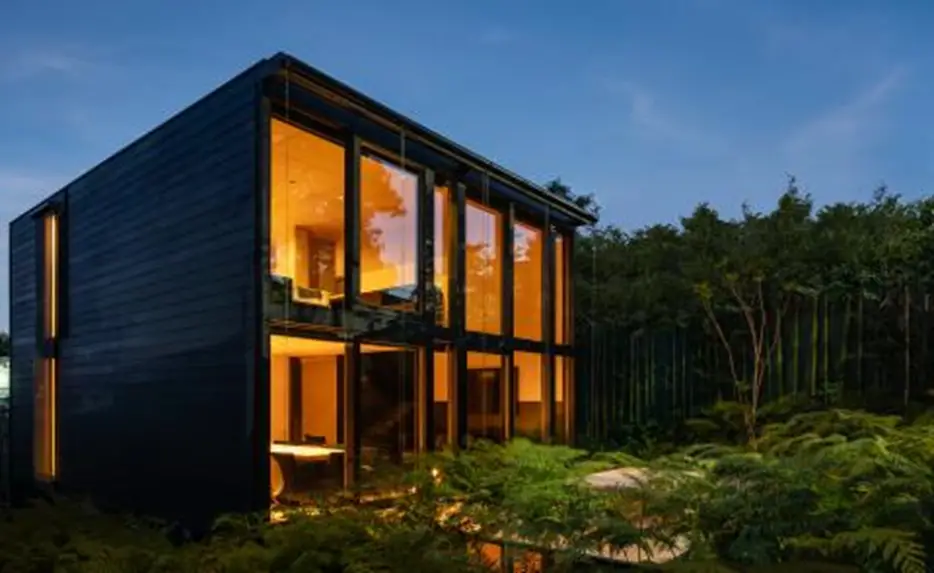
They are an environmentally friendly and space-saving living option that lightens the burden on Mother Earth!
3D printing
Also known as additive manufacturing, 3D printing is a process where three-dimensional objects are created from a digital representation by putting layer after layer of printing material. Typically, the material used in 3D printing is made of plastic or metal. A special type of concrete is used for housing projects.
In layman’s words, the material is deposited one layer at a time to build 3D-printed homes. Walls are built from the ground up, one layer at a time, using a nozzle that is extruded through a paste-like concrete mixture and is directed by a massive gantry.
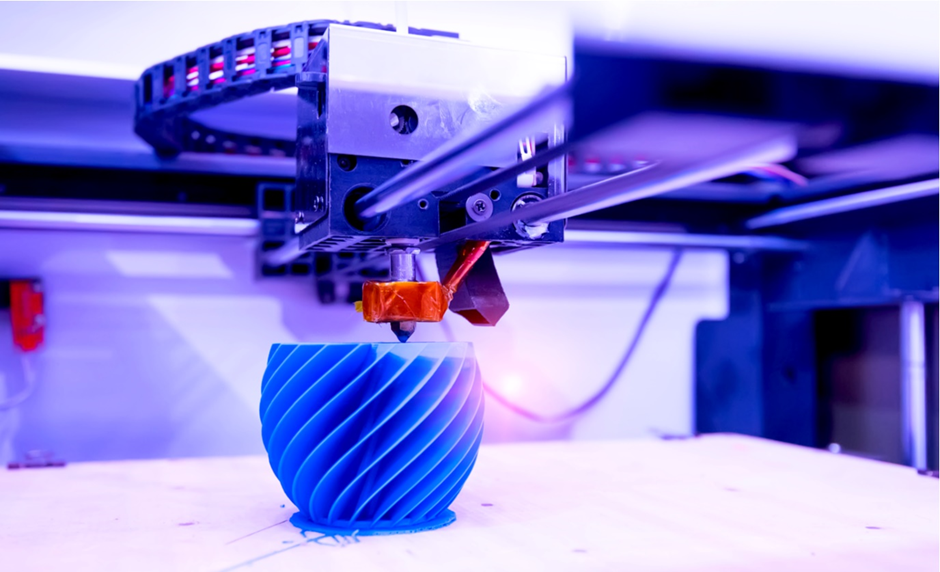
It doesn’t initially seem complicated, and it isn’t. However, there are significant consequences to such a construction process. Despite being in its very early phases, it has already produced encouraging results and has quickly attracted the media’s attention.
3D printing in construction
The concept of printing buildings in three dimensions is not new. Numerous innovators have been lured to the idea of being able to swiftly print a structure and have spent years trying to scale the technology as a result of the dire need to build more homes faster and more effectively.

Also, traditional construction faces a lot of challenges. Construction practices are outdated. 3D printing can make a big difference in terms of optimization and efficiency. It can open new designs and bring a paradigm shift from a user experience point of view.
But for all their efforts, that 3D-printed world has proven elusive, and many impressive prototypes have struggled to become viable for mass production.
Problem with plastics?
In a report published by sailors and environmentalists, it’s forecasted that by 2050 there will be more plastic in the ocean than fish, but the odd thing about waste plastic pollution is that it’s mostly a behavioral problem. You see, we refer to plastic objects as single-use, but that really is only because we use them once and then throw them away.
The chemical compounds that are used to make plastics are called polymers, and the one I’m most interested in is called p-e-t or polyethylene tetraethylate. It’s also known as the number one plastic, and it’s used to make sushi containers, like fizzy drink bottles; pet makes up eight percent of all plastics produced globally and 20 percent of all plastics used for packaging.

It’s these packaging plastics that are referred to as single-use, but despite their bad reputation, the pet is stronger and lighter than concrete food, safe, transparent easy to recycle and process. It’s relatively cheap to make and is also incredibly durable, which is part of the problem.
Systems for the processing and recycling of waste plastics are already in place, but long-term end uses for these materials are lacking.
Using recycled plastic as the raw material for 3D printing –
Plastics are generated from nonrenewable petroleum and do not decompose easily in the environment. That’s using up finite resources and producing everlasting trash. Though recycling is the best solution to this issue, few people have the resources to do it themselves.
Instead, we rely on recycling services. In 3D printing, recycled filament is used for construction.
This recycled filament is made of recycled plastic in an effort to minimize the plastic footprint that humans leave on Earth. It comes in many different materials, such as your standard PLA or ABS, and rarer materials like HIPS and ASA.
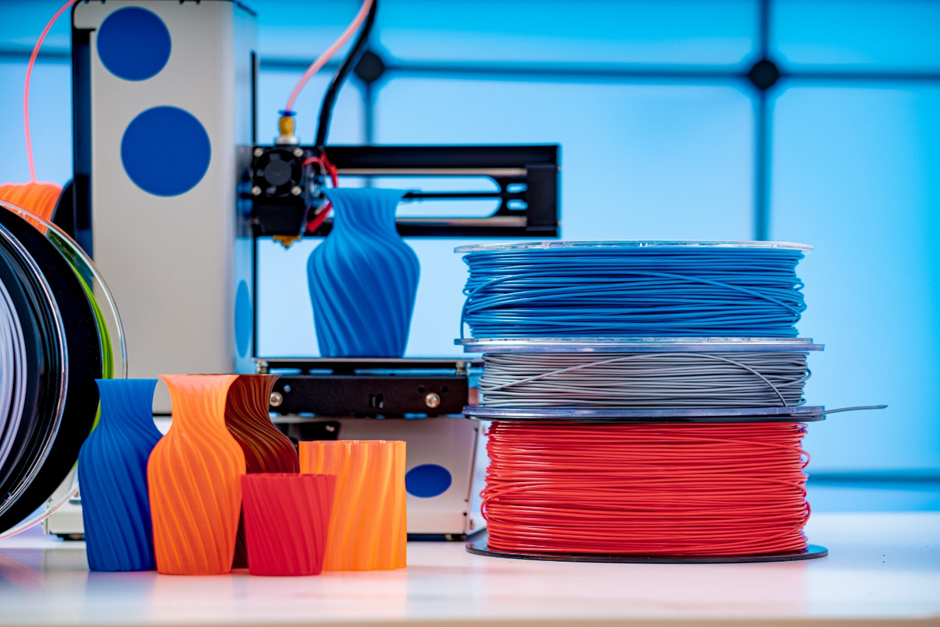
The recycled filament is made the same way as regular filament but with raw materials sourced from recycled plastic, either from bottles or other recyclable scraps.
These scraps are then loaded into machinery that grinds them into small plastic pellets. Just as the regular filament is made, the pellets are heated and cooled to form a particular shape known as filament.
Impact of this revolution –
The impact of this moment on construction and on the buildings we all use could be huge.
With the promise of cutting waste, reducing time on site, and addressing labor shortages, some see 3D printing as the answer to many of our world’s challenges.
Advances in 3D printing technology have enabled the construction of full-scale buildings like bridges and homes, as well as ideas for the first human base on Mars. 3D printing was initially used to create small-scale prototypes.

Although 3D-printed buildings have begun to appear all over the world, from Canada and the Netherlands to Dubai, which plans to print 25% of its new structures by 2030, the technology has not yet fully taken off as a common building method.
Benefits of 3D printing in construction –
- Comparing the speed of 3D printing to conventional construction techniques, a house may be built much more quickly. Construction often takes a few days, while the precise time range primarily depends on the size of the project.
- Because the printing machinery handles the majority of the work, 3D printing construction sites employ fewer workers than conventional sites. Additionally, having fewer employees on site means fewer accidents and fatalities at work.
- Building costs for 3D-printed homes are said to be lower, but this claim is somewhat contested given the high cost and several restrictions of 3D printers for major construction.
- It is feasible to build in ways that are either impractical or prohibitively expensive with 3D printing. Because printing feedstock materials can be highly altered to produce superior qualities, engineers can also use their creativity.
- When compared to conventional construction, the method of 3D printing houses is more resource-efficient.
- With 3D printing, only the exact amount of material is used to construct a home; no scraps are left behind, unlike traditional construction methods like sawing or carving, which produce a lot of unnecessary garbage. Furthermore, any leftover concrete-based feedstock materials can and should be employed in the subsequent construction project.
- In sum, 3D printing homes have the potential to be pivotal in a wide variety of contexts around the globe. The important factors we’ve addressed thus far—including savings in time, money, and labor, as well as increased efficiency and new opportunities—illustrate why this technology may be so beneficial.
- When compared to the entire construction process, 3D printing a house utilizes far less energy. Think about all the effort expended each day to bring in supplies and move full work crews to the construction site.
- Compared to traditional manufacturing methods, 3D printing can reduce costs in the long run by requiring less human work and using materials that can be found locally.
PERI designing –
The completion of a 3D-printed house in Beckum, Germany, is set to change everything.
Developed by leading formwork and scaffolding firm PERI, experts in its Disruptive Products and Technologies department, and its project partners, the structure, a detached single-family property, is the first 3D-printed house in Germany – and offers 160 square meters of living space across its two stories.
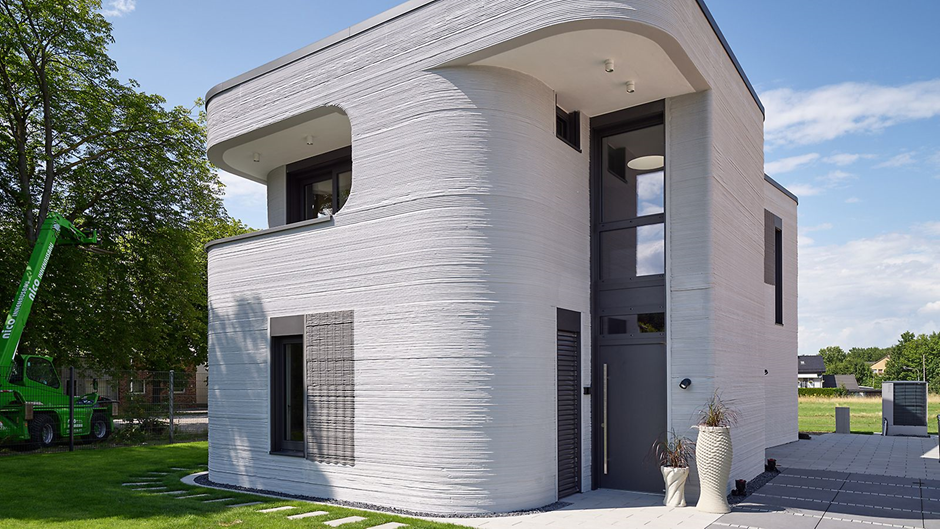
As the first 3D-printed building in Germany to receive official national building accreditation, this accomplishment is a game-changer that paves the way for more ambitious endeavors.
PERI’s crew is currently hard at work building the largest 3D-printed multi-family house in Europe, located just outside of Ulm. The house will have 380 square meters of living area, split among five units across three stories.
A significant barrier that few other 3D-printed structures have sought to bridge is that PERI engaged a number of the key trades on these projects.
Almost all costly and wasteful blunders were avoided since pre-construction services, and other tasks were integrated with the structural design.
Azure creating waves in L.A
Another startup called Azure Printed Homes is taking a different approach: By 3D-printing the roof, floor, and walls with recycled plastic and building the rest of the home inside a factory, it keeps costs lower.
About 25% to 30% more is added for the foundation, delivery, and utility hookups, but it’s still far cheaper than other options.
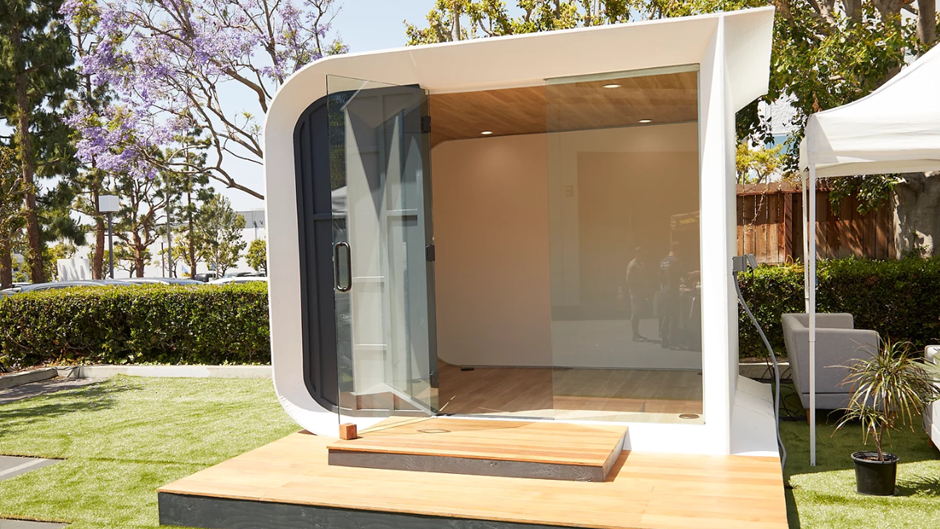
Culver City, next to Los Angeles International Airport, is the site of the company’s factory, where the first 3D-printed houses will soon be produced.
It was important for Azure to find a lightweight material so that houses could be assembled at a factory and then shipped to the location. Both factory prefabrication and 3D printing can cut down on building times and labor expenses.
Azure also desired to find a use for waste material and reuse a waste product that is somewhat of a problem on a global scale.
The firm’s first project involves collaborating with a developer to construct a cluster of cottages suitable for short-term rentals; the firm will also begin processing a waiting list for backyard cottages from existing homeowners.
However, discussions are also underway with organizations planning to construct tiny houses for the homeless.
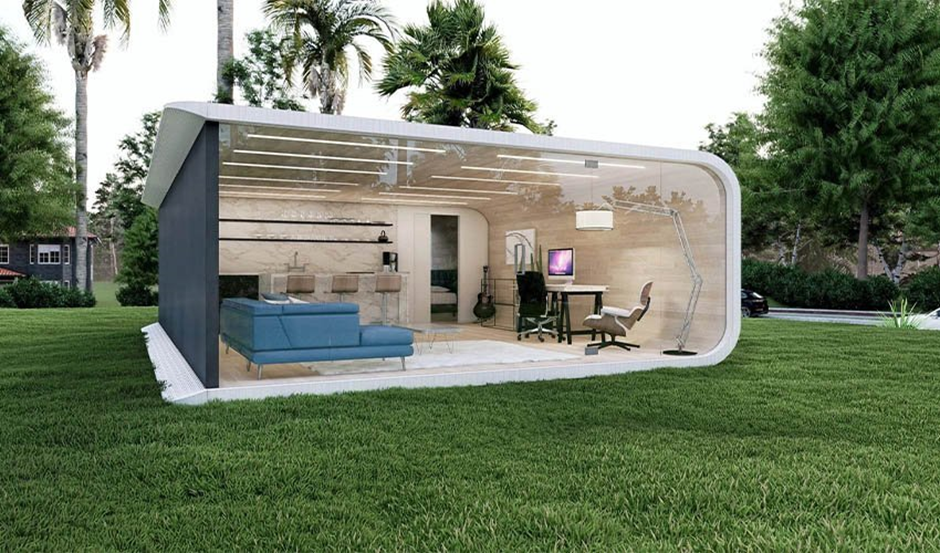
The 3D configurator on Azure’s website allows users to plan and personalize their buildings down to the smallest of elements, such as color schemes, materials, and layouts.
Azure 3D produces the device in under 24 hours after the design is finalized. The parts are put together in a factory, shipped out, and installed at the customer’s location.
Problem-Solving with 3D printing
The housing crisis is a persistent problem in developing nations. For sustainable economic development, it is essential to be able to offer sufficient numbers of high-quality dwellings at reasonable costs. The comparatively quick process of 3D printing homes may be able to address the issue of homelessness in the near future.
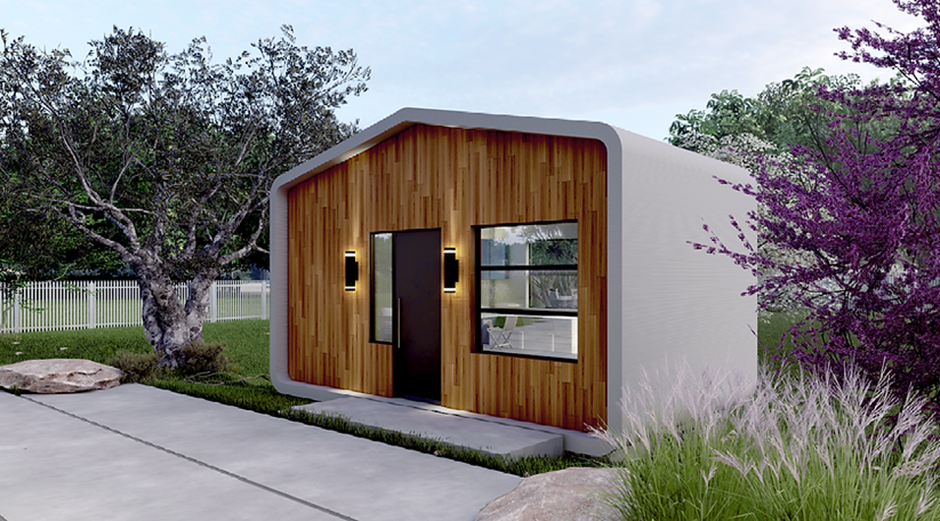
3D-printed houses could also be beneficial in humanitarian crisis situations, especially after natural disasters where homes get tragically lost in earthquakes, fires, or tsunamis.
Mars exploration may be made possible through 3D printing. The objective is to send automatic 3D printing machinery to Mars, and since the necessary raw materials could be obtained there, the printers could begin constructing habitations well before the first humans set foot on the planet.
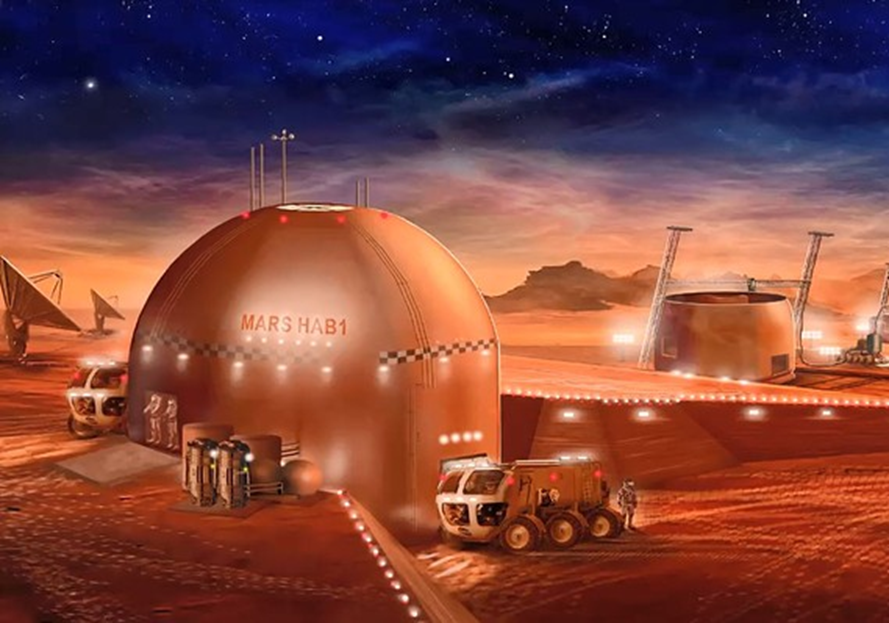
It makes sense that NASA is so intrigued by the technology.
Conclusion
While the technology has its challenges, the success of many such projects around the world marks a major step forward and will stand as a powerful case study for innovators -rekindling the determination to make this building technique viable at scale.
Although construction with 3D printing equipment is still very expensive, just like any other cutting-edge piece of technology, there’s plenty of room for improvement, and as the technology progresses, the costs associated with machinery and operation will surely reduce.
Remind yourself the next time you hear about 3D printed homes that, although being a young technology, it has already achieved significant success and is widely used.
The imagined world of 3D printing has just taken a giant step toward reality.




